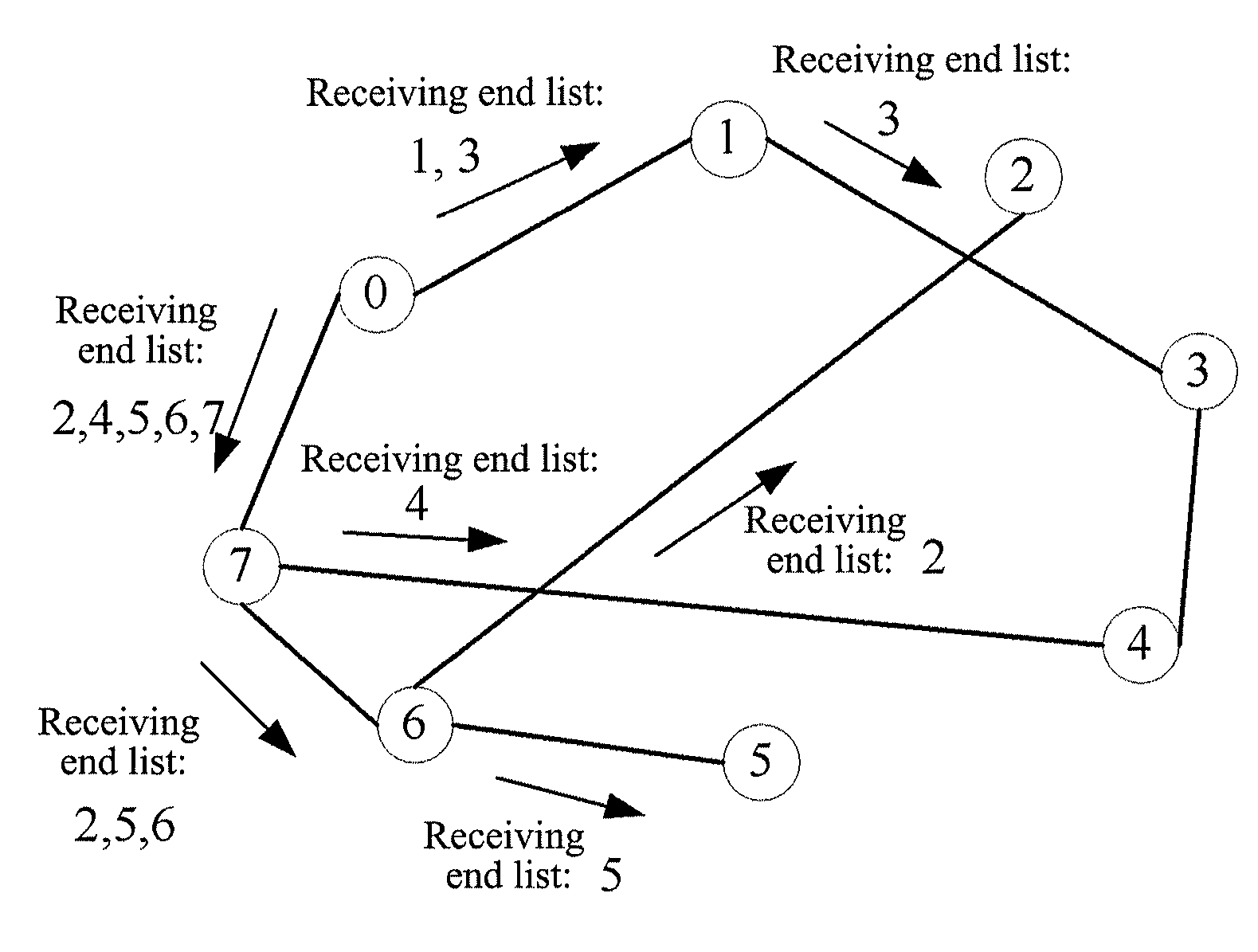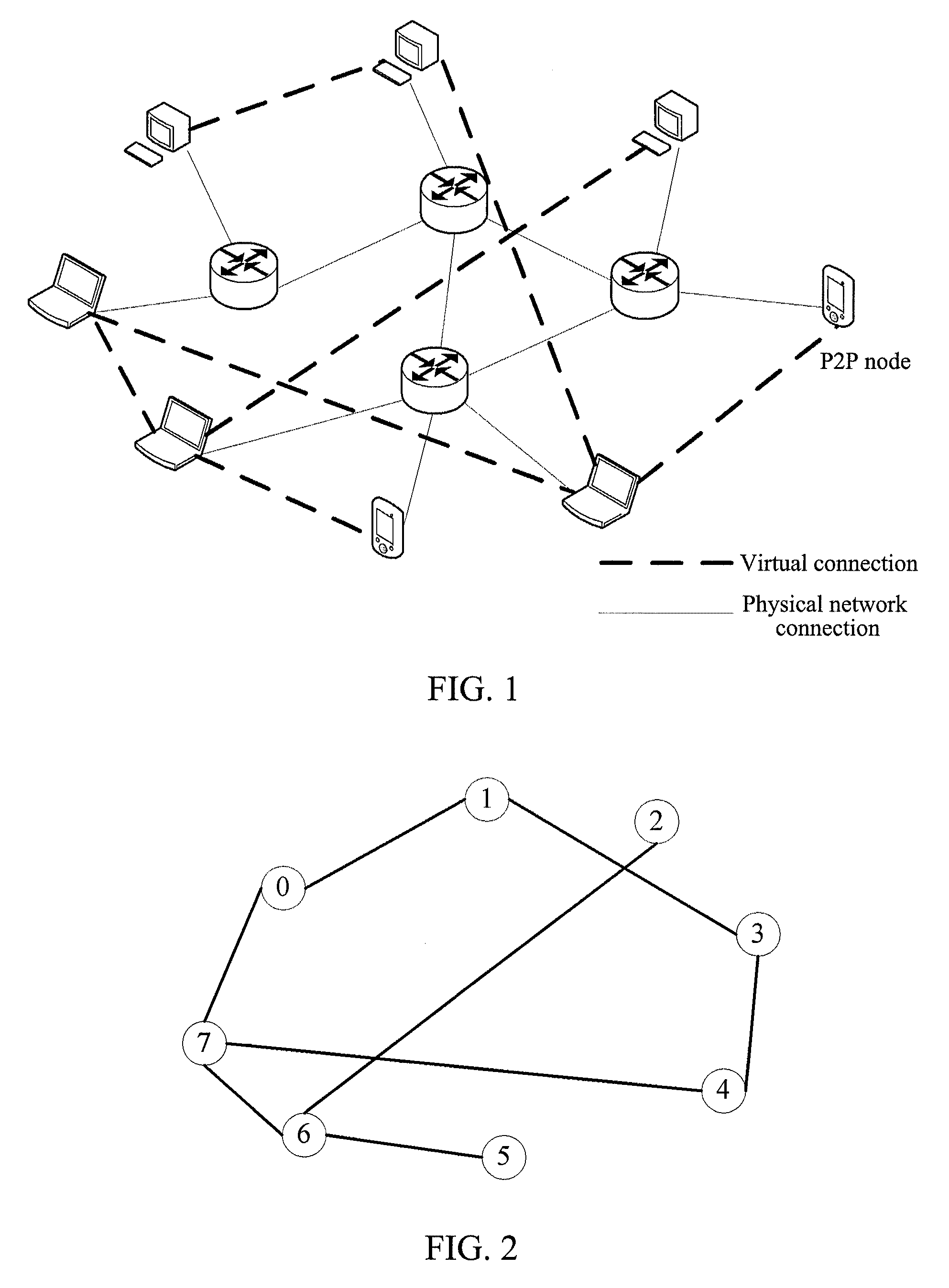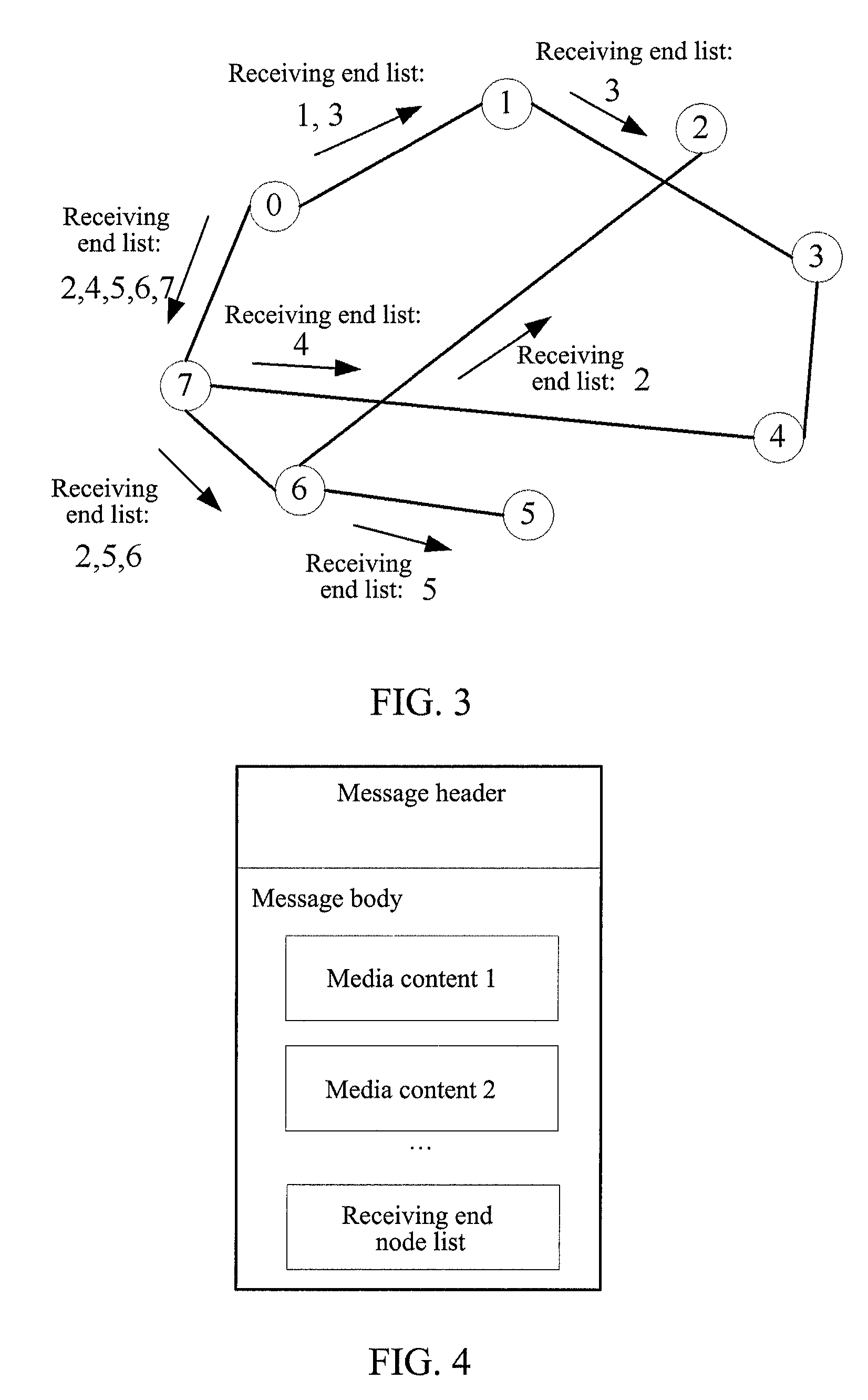Method and system for broadcasting multimedia message
a multimedia message and broadcasting technology, applied in the field of internet technology, can solve the problems of service failure, lager waste of network bandwidth, and inability to organize and optimize connections between nodes in p2p networks, and achieve the effect of saving bandwidth and processing capacity resources
- Summary
- Abstract
- Description
- Claims
- Application Information
AI Technical Summary
Benefits of technology
Problems solved by technology
Method used
Image
Examples
Embodiment Construction
[0049]FIG. 2 is the service network architecture of the multimedia message broadcast service, wherein the peer node can be divided into the broadcast source and the receiving end according to the service definition. As shown in FIG. 2, the broadcast source node 0 is responsible for generating and sending the multimedia message contents, the receiving ends 1˜7 are responsible for receiving and forwarding the multimedia message contents and displaying the multimedia message contents to the users.
[0050]With respect to the network architecture of FIG. 2, the present invention provides a method for broadcasting the multimedia message, which adopts the “relay broadcast” mode to send a broadcast message, that is, the broadcast source node does not send the message to all the receiving end nodes one by one, but send the message to the nodes which have established the virtual connections with the broadcast source node and then these nodes “forwards” the message to other nodes, and so on, unt...
PUM
 Login to View More
Login to View More Abstract
Description
Claims
Application Information
 Login to View More
Login to View More - R&D
- Intellectual Property
- Life Sciences
- Materials
- Tech Scout
- Unparalleled Data Quality
- Higher Quality Content
- 60% Fewer Hallucinations
Browse by: Latest US Patents, China's latest patents, Technical Efficacy Thesaurus, Application Domain, Technology Topic, Popular Technical Reports.
© 2025 PatSnap. All rights reserved.Legal|Privacy policy|Modern Slavery Act Transparency Statement|Sitemap|About US| Contact US: help@patsnap.com



